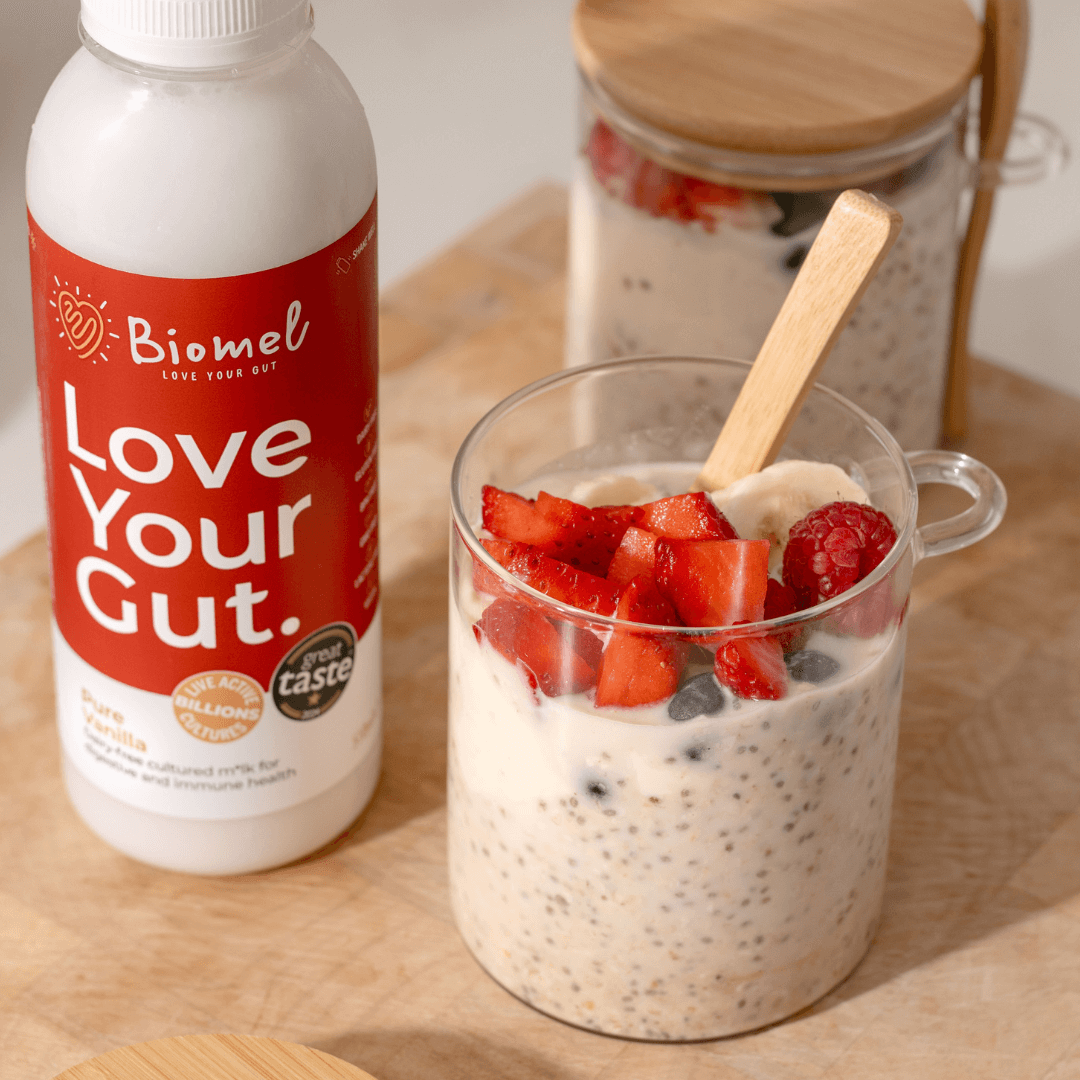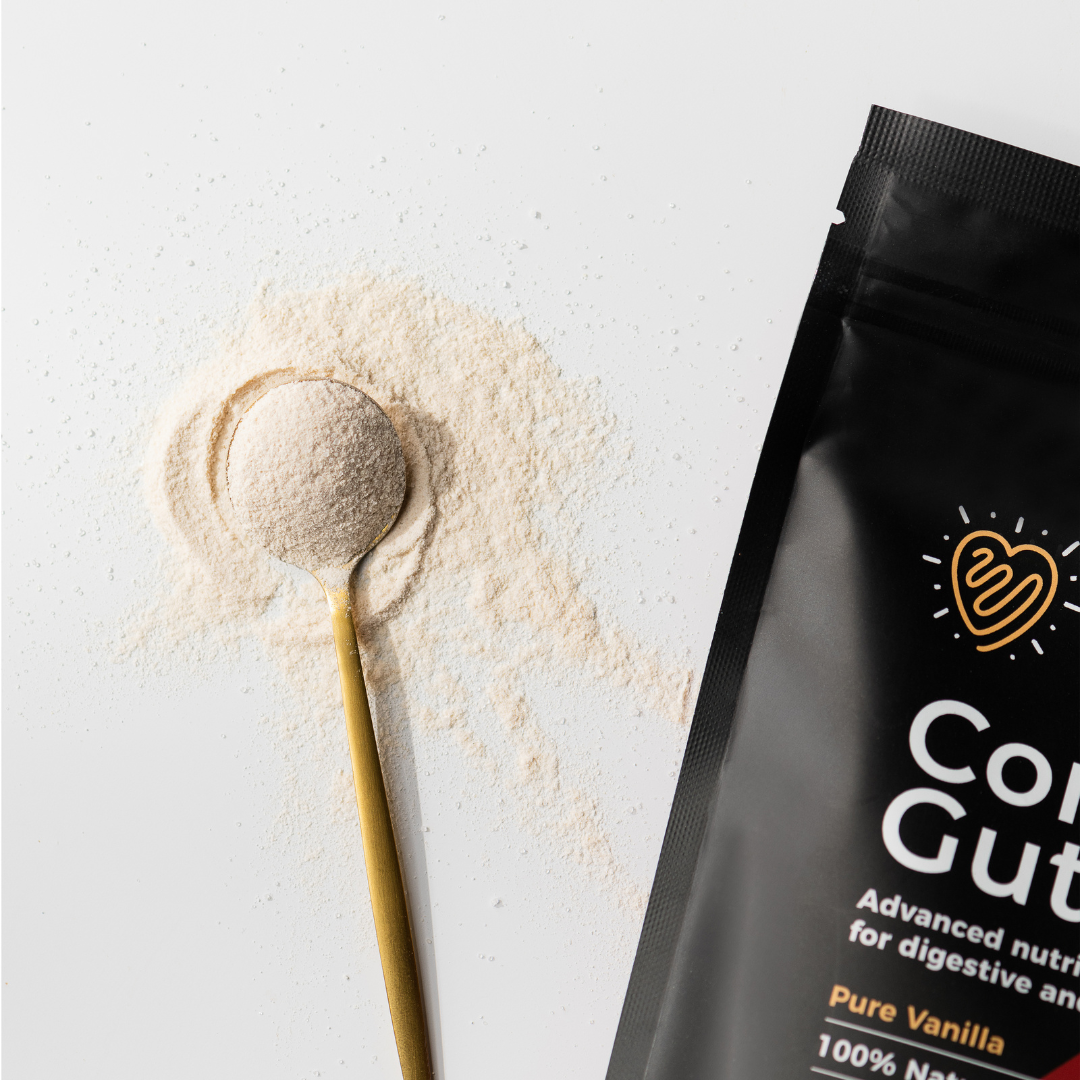Fibremaxxing, The Latest Trend, But is it Backed by Science?

If you've spent any time on TikTok recently, chances are you’ve come across the term “fibremaxxing.” From smoothie recipes to gut health glow-ups, it’s everywhere. But is it just another fleeting wellness trend, or does it have real science behind it?
The short answer? Fibremaxxing isn’t just a catchy hashtag; it’s rooted in meaningful nutrition principles that support gut health, reduce inflammation, and may even benefit your mood and metabolism. In fact, it might be one of the more positive trends to emerge, considering that the National Diet and Nutrition Survey (2019–2023) found that only about 4% of UK adults meet the recommended 30g of fibre per day.
Let’s explore what fibremaxxing really means, what the science says, and how to do it safely.
What is fibremaxxing?
Fibremaxxing is a trending nutrition approach focused on increasing the variety of fibre-rich plant foods in your diet, not just the quantity. The concept stems from research like the American Gut Project, which found that people who eat 30 or more different plant foods per week have significantly more diverse gut microbiomes than those who eat fewer than 10. And a diverse microbiome can be linked to better digestion, immunity, metabolic health, and even mental well-being.
So rather than just sticking to oats and leafy greens, fibremaxxing encourages you to rotate your fibre sources – think beans, lentils, nuts, seeds, grains, fruits, vegetables, and herbs – to feed a broader range of beneficial gut bacteria. It’s also a smart way to ensure you’re getting both soluble and insoluble fibres in your diet.
Is it just a tiktok fad?
Not quite. While fibremaxxing gained traction on TikTok, with creators sharing high-fibre recipes that have gone viral, this trend is actually grounded in legitimate nutritional science.
According to a 2019 meta-analysis published in The Lancet, people with high-fibre diets had a 15–30% reduced risk of cardiovascular disease, type 2 diabetes, and colorectal cancer. Fibre is also known to support blood sugar regulation, satiety, and gut health – but like any trend, it comes with a caveat: more isn’t always better, especially if your body isn’t used to it.
Can too much fibre be a problem?
Absolutely – especially if you increase your intake too quickly.
Georgia, our in-house nutritionists warn that suddenly loading up on fibre without enough hydration can lead to:
- Bloating
- Constipation
- Gas and cramping
- Discomfort, particularly for people with IBS or sensitive digestion
Want to understand more about this balance? Read Georgia’s latest blog on can too much fibre cause constipation?
The safest approach is to start slowly, drink plenty of water, and pay attention to how your body responds. Aiming for a balance between soluble and insoluble fibres will also help prevent digestive discomfort.
How to start fibremaxxing safely
You don’t need to obsess over grams. Instead, aim to track plant variety, with a goal of 30+ different plant-based foods per week.
Here’s how to get started:
-
Diversify your grains
Swap your usual brown rice or whole wheat for quinoa, bulgur, millet, amaranth, or barley.
-
Add one new plant each day
Rotate your fruits, veggies, legumes, and herbs. A handful of parsley or a scoop of black beans both count.
-
Top everything with seeds or nuts
Chia, flax, sunflower, pumpkin seeds, and almonds all contribute unique types of fibre.
-
Mix soluble and insoluble
Soluble fibre (e.g., oats, lentils, apples) slows digestion and supports blood sugar. Insoluble fibre (e.g., veg skins, whole grains) adds bulk and keeps things moving.
-
Explore new recipes
Fibre-rich eating doesn’t need to be boring. Try new combinations and meals using plant-forward ingredients. Visit our recipe page for gut-friendly inspiration.
When gut health trends become harmful
While fibremaxxing can be a positive step for gut health, it’s important to be mindful of how health trends are framed online.
Content that appears wellness-focused can sometimes promote unrealistic goals or rigid food rules, echoing disordered eating behaviours rather than balanced nutrition.
Gut health comes from consistency and variety, not extremes. So it’s worth approaching trends like fibremaxxing with a flexible, sustainable mindset, and being cautious of getting pulled into the endless algorithm of “wellness tok.”
Aiming for 30 plants a week
If you want to take fibremaxxing further, the goal of 30 unique plant foods per week is a powerful benchmark. That doesn’t mean 30 servings, just 30 different types across the week.
Curious why this matters? The gut health game-changer: 30 plants a week
Don’t forget to hydrate
Fibre needs water to do its job properly. Without it, high-fibre meals can actually slow down digestion.
As you increase your fibre intake:
- Drink at least 1.5–2L of water per day
- Increase fibre by about 5g every few days
- Avoid jumping from 10g a day to 50g overnight, it’ll likely backfire
Final thoughts
Fibremaxxing isn’t just a social media trend; it’s backed by science. Increasing fibre variety supports your microbiome and can improve digestion, energy, and overall well-being.
If you're ready to give it a try, remember:
- Go slow
- Stay hydrated
- Embrace variety
Because when it comes to gut health, it’s not just about eating more – it’s about eating more kinds.



